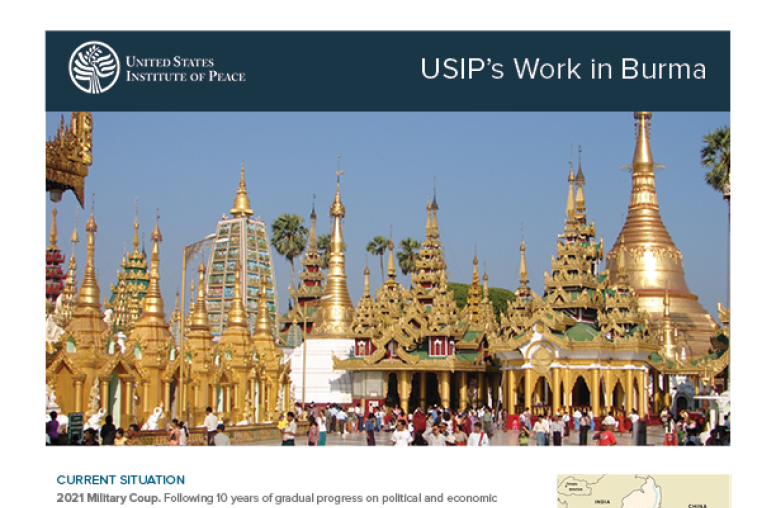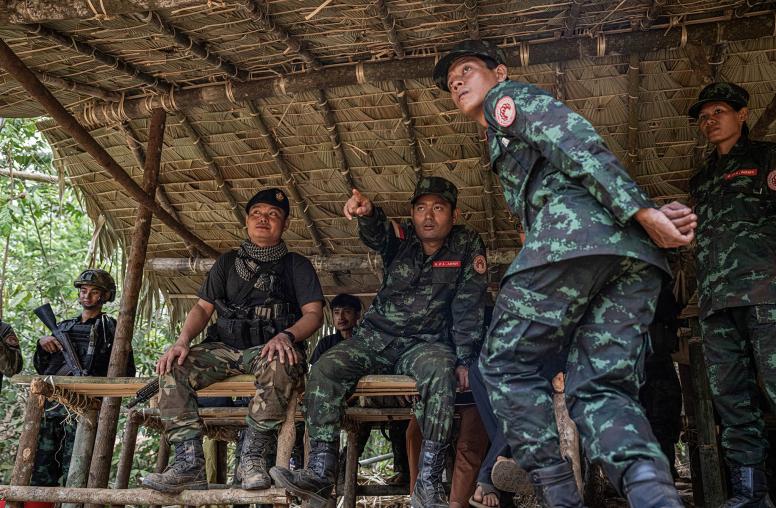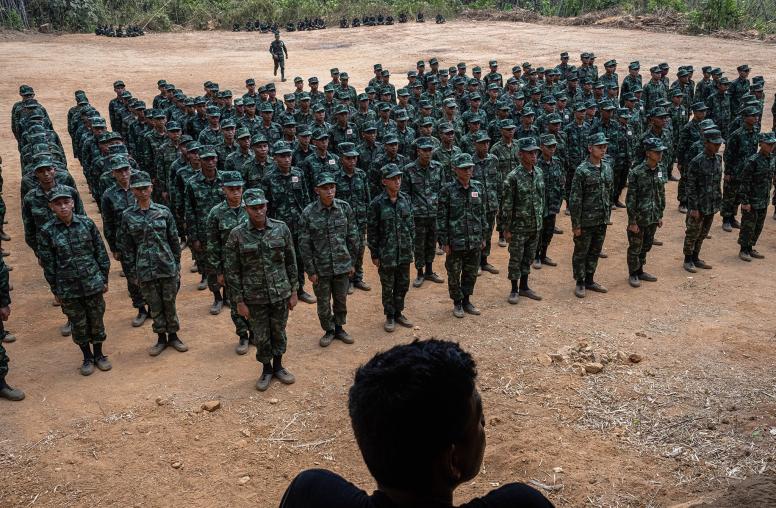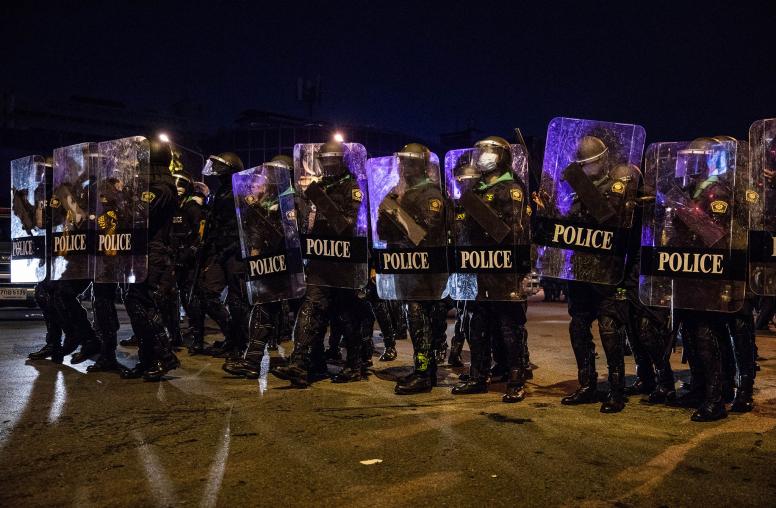Q&A: What’s Next for Burma’s National Dialogue
On the Issues with Kay Spencer and Rachel Vandenbrink
Burma's national dialogue, stalled for months, advanced this week with the opening of the second round of the 21st Century Panglong Peace Conference in Naypyidaw, the capital. The five days of political talks focus on working out a federal system to resolve the country’s ethnic tensions.

The government’s demand that groups seeking to join the negotiations lay down arms and sign the 2015 Nationwide Ceasefire Agreement (NCA) has led some of the country’s most powerful ethnic armed organizations to stay on the sidelines. Their refusal to join the agreement undermined the dialogue’s potential and was one reason for the delayed resumption of the conference after last year’s first round.
The prospects for a more inclusive national dialogue improved with a last-minute agreement that won the attendance of members from the newly formed Union Political Negotiation Dialogue Committee, a coalition that includes some of the biggest rebel organizations.
Groups that signed the national ceasefire are continuing as part of the dialogue, which is aimed at building a federal democratic union that reflects the interests of ethnic minority populations. USIP’s Kay Spencer and Rachel Vandenbrink discuss the complexities of the dialogue and its prospects going forward.
What made it possible to resume this dialogue?
The dialogue was able to move forward as the government and the armed groups that had signed the NCA agreed that enough preliminary dialogue work had been done at other levels; some key agenda items had been settled on.
At the 11th hour, with encouragement from China, the new coalition, led by the Wa ethnic group, accepted the government’s offer to attend as “special guests.” That was a surprise. The move also signaled compromise on the part of the Burmese military, which had previously refused to invite three of the coalition’s members to the conference under any circumstances.
Meanwhile, the longstanding coalition of non-signatory organizations, the UNFC, decided not to attend this round of dialogue as they were unhappy with being offered what they regarded as second-class “special guest” status. They did attend the last round in August.
What has changed since the first round of dialogue last year?
The 21st Century Panglong, also known as the Union Peace Conference, opened five months after Aung San Suu Kyi’s National League for Democracy took office, succeeding the quasi-military Thein Sein government, which had also kicked off a dialogue the previous January. The new government’s talks signaled its commitment to the peace process and, significantly, brought most of the major players to the table.
Since then, fighting between the military and ethnic armed groups in the northeast has impeded moves toward nationwide peace; some say it’s the worst fighting since the 1980s.
Still, there has been progress. Based on the Nationwide Ceasefire Agreement of 2015, six dialogues were held at the subnational level in recent months to feed into the national dialogue—a wide range of stakeholders participated in these. Recommendations from these discussions were distilled into “basic principles” to be addressed in the national round.
A new obstacle emerged with formation of the Wa-led coalition, which rejected the government-led peace process framework. Until recently, most key ethnic armed groups had either signed the NCA or were negotiating to sign it.
What is this Wa-led coalition?
The Wa have always been in a separate camp, and over the past two years they’ve increasingly sought to assert leadership over other armed groups. Following meetings in Wa territory in February and April, seven groups engaged in fierce fighting in the north rejected the NCA-based process and demanded their own talks with the military and the government under the auspices of the Wa-led Union Political Negotiation Dialogue Committee. The United Wa State Army, the most powerful of Burma’s armed ethnic groups, already has its own ceasefire with the government and has never expressed interest in signing the NCA.
The northern groups’ dismissal of the government-led framework raises concerns that the peace process could be further splintered, with one set of ethnic armed groups proceeding along the national agreement framework and the other remaining at war with the Burmese military, while yet others continue to try to negotiate within the NCA framework through the UNFC bloc. The fact that the Wa-led group went to this week’s conference is encouraging.
What are the primary issues under discussion this week?
The leading topic is how to transform Burma from a centralized system to a federal union. This was agreed to in principle under the NCA, but specifics are still to be hashed out. Generally, the discussions are organized around five themes: political matters, security structures, economics, natural resources and social issues.
What role does China play in the current talks?
China’s Special Envoy for Asian Affairs Sun Guoxiang played a key role this month in quietly negotiating among the Burmese government and non-signatory ethnic armed organizations a way for groups in the Wa-led coalition to attend the conference. The Chinese government has strongly supported the peace process, though China has been accused of supporting ethnic armed organizations on its border.
How does fighting in the north affect the talks?
The dialogue process continues, despite fighting that has displaced more than 100,000 people in northern Burma over the past six years. The fighting dramatically undermines trust in the process and has been one obstacle to more armed groups signing onto the government’s preferred NCA process.
So overall, what is the makeup of the Union Peace Conference?
Aung San Suu Kyi has promised to make it inclusive of all ethnic armed groups. Those that haven’t signed the NCA yet but are attending as “special guests” are allowed to submit papers to the conference but not speak in the sessions. About 1,300 people are attending, including 700 representatives of the government, parliament, military, armed organizations, political party representatives and ethnic groups. This conference is not dealing with the Rohingya issue, which is being addressed through other processes.
But there’s another kind of exclusion: Women, youth and civil society have mostly been kept out of the elite-driven, formal peace process. These are groups that will be critical for a sustainable peace in Burma.
What are the next steps—and is failure possible?
After this conference, another dialogue would be scheduled in six months. In the interim, there would be lower-level discussions that feed into it. The government, meanwhile, will continue trying to get non-signatories to join the NCA, although it’s unclear whether and how it will negotiate with the new coalition and with the older UNFC alliance. In the meantime, conflict in the north continues unabated.



